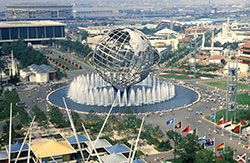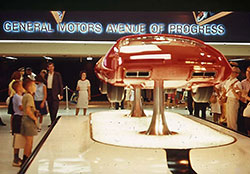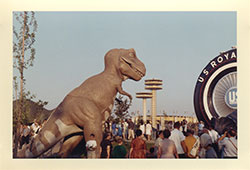The 1964 New York World's Fair: History and Magic
The 1964 World's Fair took place in New York in Flushing Meadow, Queens, and continued for 360 days, almost two full years. The event was part of a celebration that commemorated the 300th anniversary of New York City's British command forces gaining control of the Dutch city of New Amsterdam (which is now New York City) in 1664. The fair was a massive celebration that spanned 640 acres and featured 140 different pavilions. The site was also the same place where the 1939-1940 New York World's Fair was held.
The themes of the fair were "Man in a Shrinking Globe in an Expanding Universe" and "Peace Through Understanding," and most pavilions featured U.S. companies. In addition to the U.S. companies, there were also 21 state and 36 foreign pavilions. In 1962, Seattle's World's Fair was sanctioned by the BIE, or the Bureau of International Expositions. As for the 1964 fair, it had not been sanctioned by the bureau, and many European nations boycotted. Nonetheless, Middle Eastern, African, Asian, and South American corporations were still in attendance. The focus of the fair and the expos was to show people the newest technology that was coming out at that time.
As was to be expected, the U.S. companies proudly attended and sponsored extremely intricate and expensive pavilions so that patrons would be intrigued by their brands. A few examples of the companies that were featured include Pepsi Cola, U.S. Steel, IBM, Ford Motors, General Electric, and DuPont, to name a few. They also had exciting entertainment acts that were designed to entice customers and get people interested in their companies. All told, more than $1 billion was invested in total by these companies just for the fair itself.
Many people felt the fair was a grand success. However, in the viewpoint of many of the sponsors, it was not as much of a success financially. The projected number of people expected to attend was approximately 70 million. But after the first year, attendance was around 25% less than projected, and the fair was already at a deficit of around $10,000,000. Once people realized the fair was in danger of failing, more exciting entertainment was enlisted to help. Surprisingly, in the last three weeks of the fair, attendance suddenly grew to about 51 million total. The surge of people during that small time frame was about 7 million!
The final numbers showed that the New York World's Fair of 1964 was successful and proved that large expos like it could bring revenue and exposure to businesses. It was truly a landmark when it came to showing the world that the United States was a powerhouse of trade and commerce. Sadly, the fair still did not bring in enough income to repay the cost of using Flushing Meadows Park as the site of the fair. The man in charge of the fair, Robert Moses, was enlisted to help put the event together because of his extensive prior experience in working with event organizing. His end goal was to utilize the fair as a means to help revitalize Flushing Meadows Park.
Because the fair lost money, it could not repay much of its debt to creditors. Legal battles lasted until 1970, when the case was finally closed, and within six months, most of the pavilions were bulldozed. A few of the ones that survived ended up serving other purposes. For example, the Austria pavilion turned into a ski lodge. The Wisconsin pavilion served as a radio station back in Wisconsin. The Spain pavilion ended up moving to St. Louis and is now part of a Marriott hotel. There were many other pavilions that ended up moving to other parts of the country and getting revamped and repurposed.
All told, Flushing Meadows Park did end up seeing some improvements thanks to the 1964 World's Fair. In fact, the city received a grant for a science museum and a space park that showcased to visitors the rockets and vehicles once used in early U.S. space explorations. The New York and federal pavilions were both kept intact to be used for the future, but the federal pavilion eventually met its demise in 1977. The New York pavilion still sits in the park. Sadly, it is crumbling and falling apart, but there has been some talk of cleaning up the historic pavilion and restoring it to its former glory. The Heliport is now a catering and banquet hall entitled "Terrace on the Park." Regardless of its shortcomings, there is no doubt that the 1964 New York World's Fair was an event that modern history will never forget.
More Resources About the 1964 New York World's Fair:
- The 1964 New York World's Fair
- President Lyndon B. Johnson's Remarks at the Opening of the New York World's Fair
- 'The World of Tomorrow': Scenes From the 1939 New York World's Fair
- In Focus with Alan Taylor - 1964: The New York World's Fair
- 6 Technologies That Debuted at the 1964 New York World's Fair
- Architects Remember the '64-65 World's Fair
- The General Electric Pavilion
- This Week in Universal News: The New York World's Fair Opens, 1964
- 1964 World's Fair in Photos
- Historic Images from the 1964 World's Fair
- Robert Moses and the World's Fair
- New York's 1964 World's Fair Was Actually Something of a Failure
- Now That's a Souvenir: How a World's Fair Pavilion Became a Family's Cabin
- 1964 World's Fair: When the world came to Queens
- Rescuers target crumbling New York State Pavilion from 1964 World's Fair


